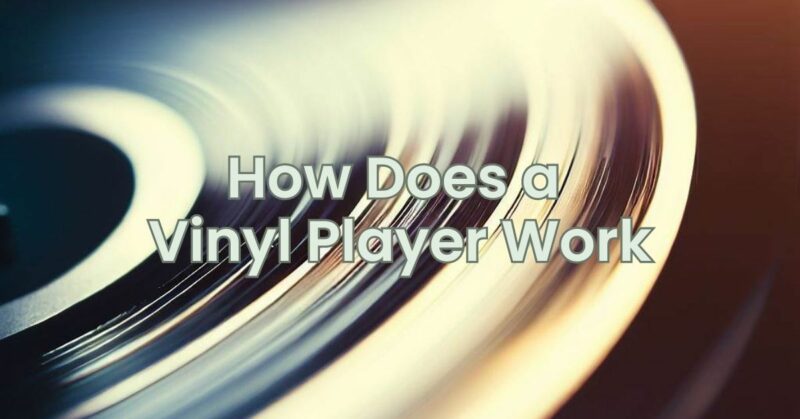A vinyl player is a device that plays music recorded on vinyl records. Vinyl records are made of polyvinyl chloride (PVC) and have a spiral groove that runs from the center to the edge. The groove contains a microscopic representation of the sound waves that were recorded in the studio.
When a vinyl player is turned on, a needle (or stylus) is placed in the center of the record. The needle moves along the groove, following the microscopic sound waves. As the needle moves, it vibrates, which creates an electrical signal. This electrical signal is then amplified and sent to speakers, where it is converted back into sound waves.
The sound quality of a vinyl player is often considered to be superior to that of other types of music players, such as CDs or MP3 players. This is because vinyl records have a wider frequency response than CDs or MP3 players. This means that vinyl records can reproduce a wider range of frequencies, which results in a richer and more detailed sound.
Vinyl players are also capable of reproducing the “warmth” and “organic” sound of analog recordings. This is because vinyl records are an analog medium, which means that the sound waves are stored as physical vibrations. This is in contrast to digital media, such as CDs or MP3 players, which store sound waves as a series of numbers.
If you are looking for a high-quality way to listen to music, a vinyl player is a great option. Vinyl records offer a unique listening experience that cannot be replicated by other types of music players.
Here are some of the key components of a vinyl player:
- Turntable: The turntable is the main component of a vinyl player. It spins the record at a constant speed, which is important for maintaining the sound quality.
- Needle (or stylus): The needle is the part of the vinyl player that actually touches the record. It vibrates as it moves along the groove, which creates an electrical signal.
- Preamplifier: The preamplifier amplifies the electrical signal from the needle. This signal is then sent to the amplifier.
- Amplifier: The amplifier increases the power of the electrical signal from the preamplifier. This signal is then sent to the speakers.
- Speakers: The speakers convert the electrical signal from the amplifier into sound waves. These sound waves are then audible to the listener.
Here are some of the benefits of using a vinyl player:
- Sound quality: Vinyl records are often considered to have better sound quality than other types of music players, such as CDs or MP3 players. This is because vinyl records have a wider frequency response than CDs or MP3 players. This means that vinyl records can reproduce a wider range of frequencies, which results in a richer and more detailed sound.
- Authenticity: Vinyl records are an authentic way to listen to music. They were the original way that music was recorded and played back, and they offer a unique listening experience that cannot be replicated by other types of music players.
- Collectability: Vinyl records are collectible items. Many people enjoy collecting vinyl records, and some records can be quite valuable.
- Nostalgia: Vinyl records can evoke feelings of nostalgia for many people. They can remind people of their childhood or of a particular time in their life.
If you are considering buying a vinyl player, there are a few things you should keep in mind:
- Budget: Vinyl players can range in price from a few hundred dollars to several thousand dollars. It is important to set a budget before you start shopping.
- Features: Some vinyl players have additional features, such as a built-in phono preamp or a USB output. These features can be useful, but they may not be necessary for everyone.
- Sound quality: The most important factor to consider when buying a vinyl player is sound quality. Make sure to listen to a few different players before you make a decision.
With a little research, you can find a vinyl player that meets your needs and budget. Vinyl players can provide a unique and enjoyable listening experience that cannot be replicated by other types of music players.


